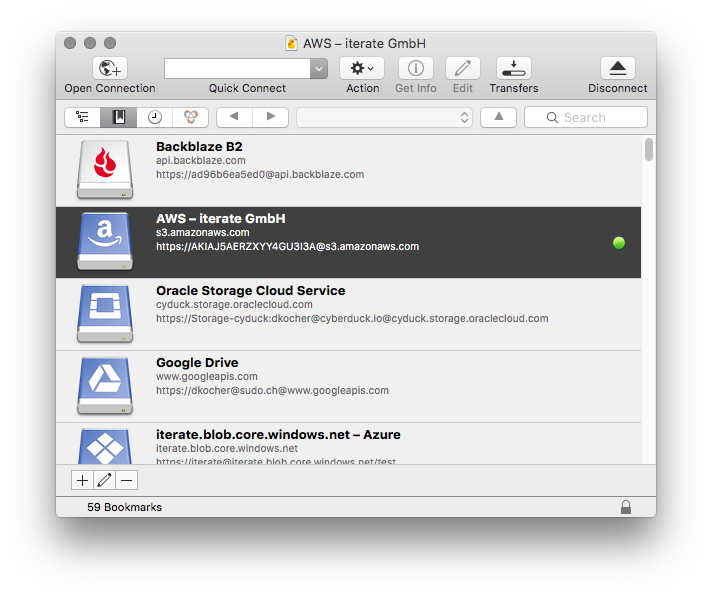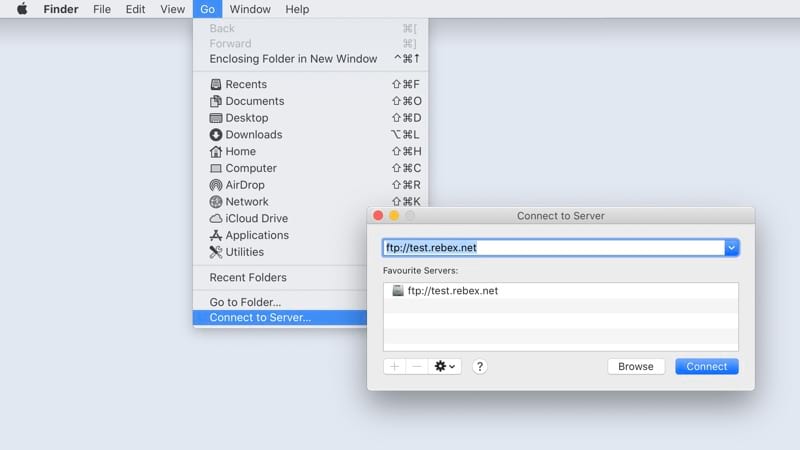

- #Use mac for ftp server how to#
- #Use mac for ftp server mac os#
- #Use mac for ftp server password#
- #Use mac for ftp server download#
But keep in mind that FTP is generally not considered secure, so be careful. If you don’t have SSH access, you can contact your hosting provider, or you can use FTP. Note: To use SFTP, you will need to have SSH access enabled on your server. using the macOS’ Terminal, instead of a third party FTP client. I will be telling you how you can accomplish basic FTP/SFTP tasks such as uploading/downloading files, renaming, moving, deleting etc. For the purpose of illustration, I’m using a test server with Linux, Apache, MySQL and PHP installed on it, with SSH access enabled. In this article I will be detailing how you can use the Terminal (Mac) as an FTP or SFTP client, to do a variety of tasks on remote servers. Quit SFTPĪt the sftp prompt, type quit and press. Either combine the words, (e.g., classnotes) or add an underscore to separate the words (e.g., class_notes).Ī message similar to this will appear - Fetching /nfs/user/i/istudent/classnotes.text to classnotes.txtĪ copy of the file will move from your UNIX account to the Macintosh. UNIX will not recognize filenames that include spaces, e.g., class notes. Either combine the words, (e.g., classnotes) or add a hyphen to separate the words (e.g., class-notes).Ī message similar to this will appear - Uploading notes.txt to /nfs/user/istudent/class_notes.txtĪ copy of the file will move from the Macintosh to your UNIX account.

UNIX will not recognize filenames which include spaces, e.g., class notes. To view a list of documents in the Documents directory, at the prompt, type, !ls Upload from the Mac to UNIX
#Use mac for ftp server download#
Now that you are in the correct directory on the Macintosh, you can upload a file to or download a file from your UNIX account.ģ.

You will see something similar to this, /Users/istudent/Documents Then type, !pwd to confirm your present directory. To change to the Documents directory, at the sftp prompt, type: You will see something similar to this, /Users/istudentĢ. At the sftp prompt, type, !pwd to see your location in the Macintosh directory. If you are working on a Macintosh in an IT pod you will have to work with the Documents directory for security reasons.ġ. Make it a habit to keep your documents in the Documents directory (folder) in OS X.
#Use mac for ftp server how to#
Whether you plan to upload or download files, first you should understand how to navigate a directory or path. The sftp prompt will appear: sftp> Navigate Local Directories
#Use mac for ftp server password#
At the password prompt, type your password and press. You will then see a message similar to: Warning: Permanently added '' (DSA) to the list of known hosts.ģ. The first time you start SFTP a message similar to this will appear, You will have to accept a certificate to complete the connection.Īt the prompt, Are you sure you want to continue connecting (yes/no)?, type yes and press. At the Terminal prompt, type, sftp NetID Click the Terminal icon in the Dock or double-click the Terminal icon in Applications> Utilities.Ģ. Moves a file from the remote server to the Mac.ġ. Moves a file from the Mac to the remote server. Lists (displays) files in present directory on the Mac. SFTP Commandsįollowing are the SFTP commands used in the document: !pwdĭisplays current path on the Mac (present working directory).Ĭhanges the local directory path. Enter commands exactly as they are displayed. Remember that UNIX is case sensitive, which means lowercase and uppercase versions of the same letter are interpreted as different characters. See How To #716 - Use Fugu for Secure File Transfer for instructions. If you prefer a GUI SFTP program, you can download Fugu at the IT Download page.
#Use mac for ftp server mac os#
This How To gives instructions for performing SFTP in UNIX using Terminal in Mac OS X. Unlike FTP, SFTP provides the security of encrypted login. Secure File Transfer Protocol (SFTP) transfers files between a mainframe computer or server and a desktop computer.


 0 kommentar(er)
0 kommentar(er)
